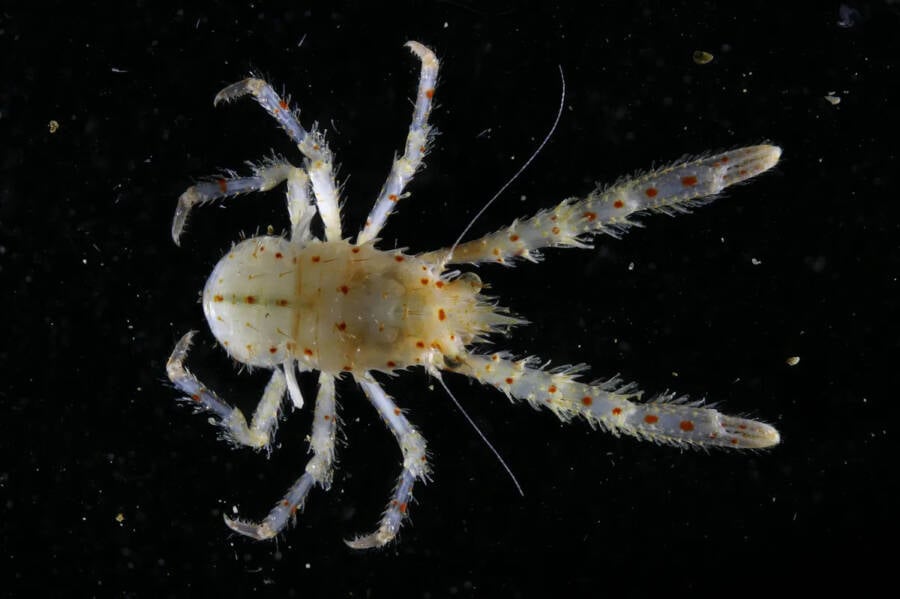“Unveiling the Depths: 866 Mysterious New Species, Including a Guitar Shark and a Mud Dragon, Discovered in the Ocean Census!”
Currently, scientists have identified roughly 240,000 marine species, but that is not even close to the projected 1 to 2 million more that call our oceans home. Even when a new species is discovered, it can take an average of 13.5 years to properly identify and catalogue — leaving these animals at risk of going extinct before they are even fully identified.
Supported by hundreds of scientists and organizations worldwide, the Ocean Census has made it its mission to streamline species identification and uncover at least 100,000 new marine species in the next eight years. So far, this global alliance has conducted 10 expeditions around the world, supported by teams of divers, submersibles, and remotely operated vehicles.
In a new press release, the Ocean Census announced that it has discovered 866 new marine species in the roughly 16 months since its inception, including new species of shark, coral, shrimp, crab, reef fish, and much more.
All of these new species have been recorded in the Ocean Census Biodiversity Data Platform, allowing researchers and the general public to view the discoveries. The organization has also created eight Species Discovery Workshops led by taxonomists from around the world, allowing for the rapid identification of new species through the use of high-resolution imaging and genetic sequencing.
Highlights Of The Ocean Census’ 866 Newly-Discovered Marine Species
Discovered at depths of 3 to 6,300 feet in waters all around the world, the 866 newly identified marine creatures have revealed the vibrant diversity of our planet’s oceans.
Some of the most notable finds include a new species of guitar shark discovered near Mozambique and Tanzania in East Africa. This species is one of only 38 known species of guitar shark, two-thirds of which are considered threatened species.
Other discoveries include:
Squat lobster

Gallardo/The Nippon Foundation-Nekton Ocean Census New species of squat lobster found near the Salas y Gómez Ridge in the southeastern Pacific.
More than 900 species of squat lobster have been discovered, and now this one joins the group. Though called a lobster, this creature is more similar to hermit crabs and lives in deep-sea coral reefs in assorted warmer areas of the world’s oceans.
Turridrupa Magnifica gastropod

Peter Stahlschmidt/The Nippon Foundation-Nekton Ocean CensusTurridrupa Magnifica gastropods discovered near New Caledonia and Vanuatu.
Discovered at depths of 650 to 1640 feet, this species has physical properties with medicinal applications. It contains a peptide that has been found to reduce pain and treat cancer in humans.
Eelpout Fish

Linley Te Papa/The Nippon Foundation-Nekton Ocean Census Eelpout fish discovered in the South Pacific near New Zealand.
The eelpout fish, also called a burbot, is a species of cold-water fish found in sub-Arctic regions. They often inhabit the deepest reaches of the ocean.
Pygmy Pipehorse

Richard Smith/The Nippon Foundation-Nekton Ocean Census New species of Pygmy Pipehorse (Syngnathidae) discovered in the Indian Ocean near South Africa.
The pygmy pipehorse is a 1.6-inch sea creature with a particular propensity for camouflage. Found by the Ocean Census in Sodwana Bay, off the coast of South Africa in the Indian Ocean, it is the first record of its genus ever found in Africa. Prior to now, it had only been found off the coast of New Zealand.
In all, while the first round of expeditions was an undeniable success, the Ocean Census team is still hard at work to reach their ultimate goal of identifying 100,000 new species.
This year, the organization will conduct 10 more expeditions across the Pacific, Indian, and Southern Oceans in the hopes of expanding our knowledge of Earth’s ocean creatures, the challenges they face, and how we can best protect them. As Ocean Census explained in their mission statement:
“The ocean is an interconnected web of life. Only by building a more complete picture of its biodiversity, and understanding the potential of its genetic blueprint, can we inform the policies and decisions that will shape its future.”
After reading about the Ocean Census, dive into the story of Challenger Deep, the deepest point in any of Earth’s oceans. Then, read about seven scary sea creatures that are so bizarre you won’t believe they’re real.


















